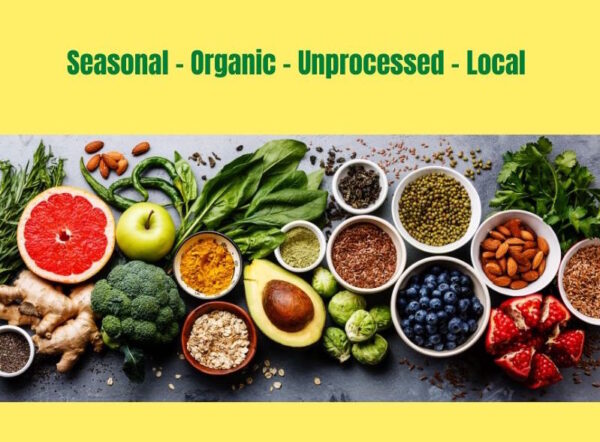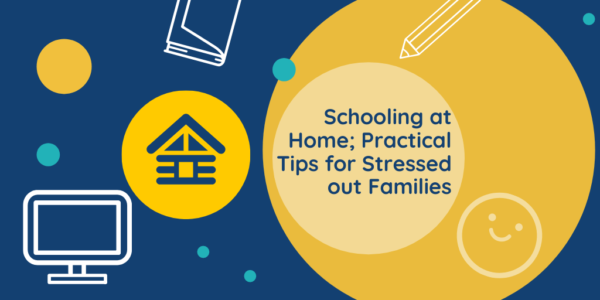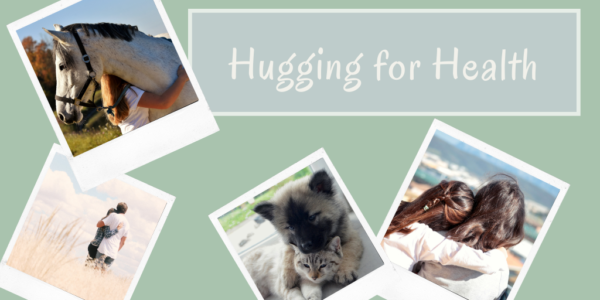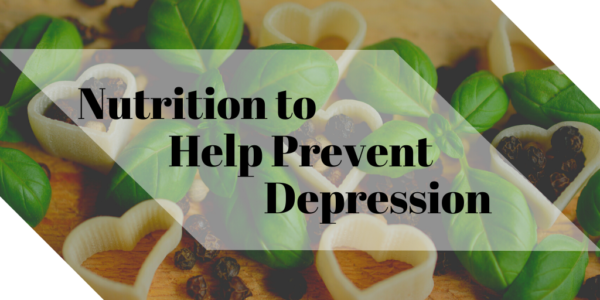S.A.D. food represents the Standard American Diet, while S.O.U.L. food stands for Seasonal, Organic, Unprocessed, and Local foods.
Despite the United States being one of the most prosperous nations in the world, many would be surprised to discover that Americans die sooner and experience higher rates of disease than most developed nations. This can be attributed to common diet and lifestyle choices.
By understanding the differences between S.A.D foods and S.O.U.L foods we can begin examining our food choices through a new lens.
S.A.D. Foods
The Standard American Diet (S.A.D) has grown to be problematic as it relies heavily on refined and processed foods with very little interest in fresh produce. Research has shown that the typical American diet is alarmingly low in vegetables, fruits, and whole grains– and extremely high in sodium, calories, saturated fat, refined grains (i.e. white flour), and added sugars.
This is apparent when visiting most conventional grocery stores which usually consist of aisles upon aisles of packaged and processed foods, often reserving only a small section of the store for fresh produce or dry bulk goods.
Heavily processed and unnatural foods are laden with questionable additives, food chemicals, dyes, and countless other substances that are used to manipulate taste, color, and shelf-life. Conventionally raised meats and non-organic produce are also suboptimal in nutrition and safety when considering the hormones, antibiotics, pesticides, and soil quality that ultimately end up in our body.
Being able to identify S.A.D foods is the first step in making supportive choices in terms of how we eat. This is relevant since well over half of American adults have one or more chronic diseases related to poor diet and inactivity; that means that either you or someone you know is experiencing this. The normalization of S.A.D eating habits is sweeping through our neighborhoods, communities, and homes and with that are the chronic conditions that come along with it. In many cases these are conditions that are absolutely preventable, yet the culture of S.A.D foods inevitably usher people directly towards illness and poor health.
A few tips to avoid S.A.D foods:
- Limit consumption of convenience and fast foods
- Read the ingredients lists, if there are words you can’t understand or pronounce, walk away
- Ask yourself, “how will I feel in my body after eating this?”
- Avoid the aisles and shop mostly in the produce section
- Choose organic & non- GMO foods when possible
- Make it a goal to eat fresh foods at least once a day
On the other side of S.A.D foods exist S.O.U.L foods, Seasonal, Organic, Unprocessed, and Local.

S.O.U.L. Foods
When we eat seasonally, we are eating with nature, not against nature. Meaning, we are opting to eat foods that naturally occur according to the conditions that are just right for particular plants and animals to thrive. Now that we are in the season of summer we can be sure to enjoy fresh corn, summer squash, tomatoes, cucumbers, beans, melons, stone fruit, and berries. These are water rich foods that are synonymous with summertime as they re-hydrate the body and are native to soaking in the hot sun.
Organically grown produce is radically different from conventional produce. For one, organic foods contain fewer pesticides and other chemicals which have proven to have serious health repercussions. Similarly, organically raised animals are much less likely to be given antibiotics, growth hormones, or fed animal byproducts. Organic foods are also GMO (genetically modified) free, meaning that the DNA has not been altered in a way that cannot occur in nature.
Unprocessed foods are alive foods that have beneficial nutrients, vitamins, and minerals – these are the building blocks of a healthy, capable body. There are no weird ingredients in unprocessed foods because they haven’t been adulterated or tampered with. Fresh vegetables, fruits, dried grains, and beans, are examples of foods that you can buy in their most natural state.
Local foods are a treasure to have around as they are the freshest foods that don’t have to travel very far to reach your hands. The moment a vegetable is picked from the ground it begins to lose its nutritional value, so the sooner it can be eaten the more value you will receive from it. Local foods are also often grown or made in small batches, so there’s a lot of care and attention that goes into each head of cabbage or jar of honey being sold. Not to mention, you’re also supporting your local economy.
A few tips to eat more S.O.U.L foods:
- Shop at your local farmers markets if available
- Read full ingredients lists on boxes + labels
- Aim for your meals to be colorful + diverse
- Eat fresh + alive foods as often as possible
- Select organic options when you can
- Find out what’s in season and eat mostly that
Nutritiously rich S.O.U.L foods provide the necessary building materials for the body to repair, discern, and replenish. While S.A.D foods simply don’t have the aliveness to provide this kind of support ultimately robbing us of our own vitality. We implore you to curiously look around your own kitchen and discover if you’re creating an environment of S.A.D or S.O.U.L. nourishment.
We are all working our way through a changed world as a result of the coronavirus pandemic. We may no longer be quarantined or under stay-at-home orders, but everyone is stretched to adapt like never before. All of us are in this together. Now more than ever, caring is what we need most. Caring for our self. Caring for others around us in our communities. Life now demands caring, resilience and compassion like never before. This is a great opportunity to create the world we want for our future generations. We invite you to join us in creating a caring movement!
Would you like to read more about UCA caring resources and products? We have other blogs on Unified Caring Association and our products, caring in our communities, and caring the UCA way!





























